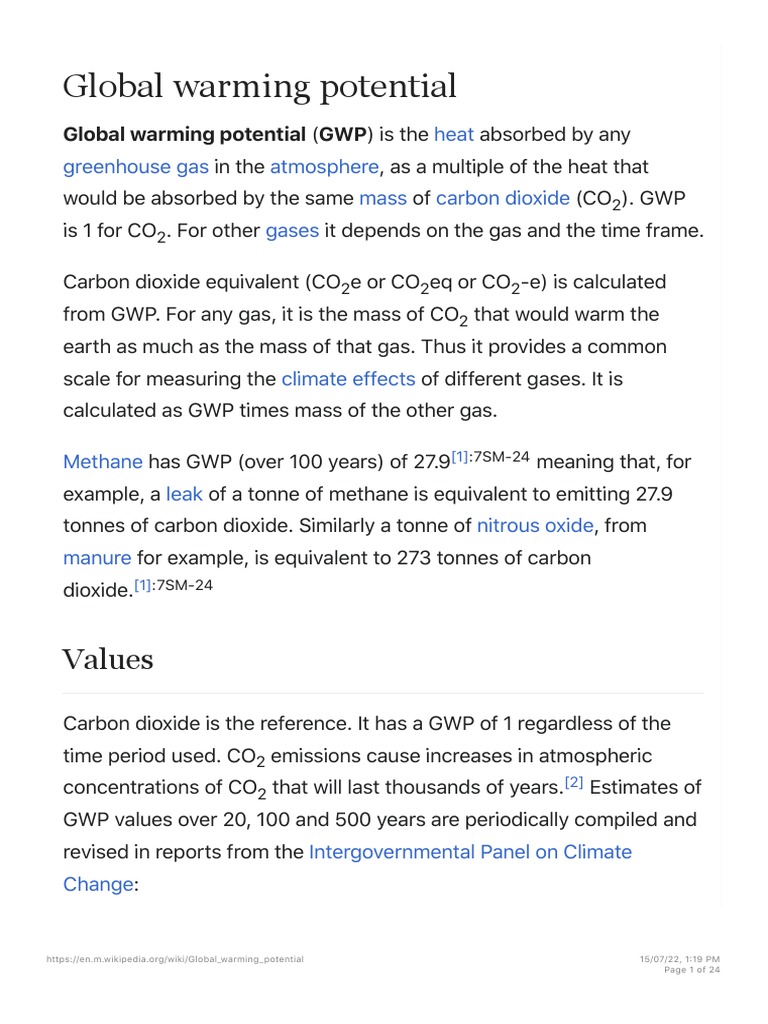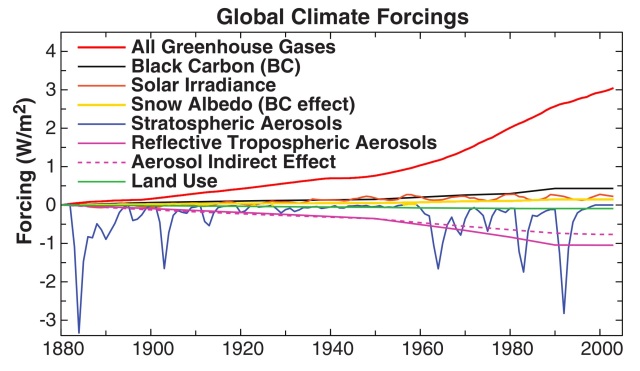Understanding the intricacies of global warming requires a meticulous examination of greenhouse gases (GHGs) and their varying effects on our atmosphere. Among the several GHGs, one stands out in terms of its devastating impact on global temperatures: hydrofluorocarbons (HFCs). This article delves into the concept of Global Warming Potential (GWP), ultimately elucidating which greenhouse gas holds the title for the highest GWP and why this knowledge is critical for environmental policy and personal accountability.
Defining Global Warming Potential (GWP)
Global Warming Potential, or GWP, is a metric used to compare the relative climate impact of various greenhouse gases. It measures the cumulative impact a gas has on global warming over a specified time frame—typically 100 years—relative to carbon dioxide (CO2), which has a GWP of 1. Understanding GWP is paramount for policymakers, environmentalists, and consumers alike as it influences regulations, market transformations, and lifestyle choices.
The GWP of a gas varies based on its ability to trap heat in the atmosphere and its longevity. For instance, some gases may remain in the atmosphere for just a few years, while others can persist for several thousand years. This longevity amplifies their warming effect, which is why GHGs with a high GWP can be disproportionately harmful compared to CO2.
Shedding Light on the Greenhouse Gases
While carbon dioxide is often at the forefront of discussions surrounding climate change, several other gases are critical to understand—particularly when assessing their GWP. Key players include methane (CH4), nitrous oxide (N2O), and various industrial gases like HFCs. Each emits varying levels of heat-trapping capabilities, thus contributing differently to climate change.
Methane, for instance, has a GWP of approximately 25 over a century, making it significantly more potent than CO2 for short-term climate disruption. Nitrous oxide presents an even greater concern, with a GWP of around 298. However, HFCs, primarily used in refrigeration and air conditioning, can reach alarming GWP values that are fundamentally higher than both methane and nitrous oxide.
The Dominance of Hydrofluorocarbons
Among the gases contributing to global warming, hydrofluorocarbons (HFCs) emerge as the standout culprit with the highest GWP. Some HFCs possess GWP values soaring into the thousands—specifically, HFC-23 has a GWP of 14,800. This staggering figure means that a small amount of HFC-23 can cause more environmental damage than an equivalent amount of CO2 over a century. The synthetic nature and industrial utilization of HFCs present substantial challenges in combatting their release into the atmosphere.
HFCs are used extensively in HVAC systems, refrigeration, and foam blowing agents. They were implemented as substitutes for ozone-depleting substances under the Montreal Protocol; however, their high GWP poses serious concerns for long-term climate health. The challenge lies in finding viable alternatives or reducing reliance on products that contain HFCs, all while ensuring that businesses don’t jeopardize operational effectiveness.
Regulatory Frameworks and Future Directions
Awareness of GWP values is translating into regulatory actions globally. Initiatives like the Kigali Amendment to the Montreal Protocol aim to phase down the production and consumption of HFCs. As nations commit to reducing their GHG emissions, understanding the nuances of GWP becomes pivotal, propelling global efforts toward sustainable practices.
Individuals, too, are becoming increasingly aware of their carbon footprints. From opting for energy-efficient appliances to advocating for stringent regulations on GHG emissions, the consumer’s voice is mounting pressure on companies to innovate and reduce their environmental impact. By selecting HFC-free alternatives whenever possible, consumers can significantly contribute to lowering the emissions associated with these potent gases.
The Intersection of Personal Choices and Policy
While significant systemic changes must occur, individual choices do matter. Engaging in eco-friendly practices, whether by using sustainable transportation options or supporting green technologies, can help mitigate the harmful effects of high GWP gases. Raising public awareness about products that contain HFCs and promoting transparency in manufacturing can enable consumers to make informed decisions.
The transition towards a low-GWP world requires collaboration between nations, corporations, and individuals. Evaluation of GHGs through the lens of GWP equips stakeholders with the knowledge required to confront global warming head-on.
In Conclusion
In summary, understanding which greenhouse gas has the highest Global Warming Potential, primarily exemplified by hydrofluorocarbons, is essential for any discourse on climate change. Identifying the potency of various gases not only facilitates sound policy development but empowers individual actions that contribute to a sustainable future. As we collectively navigate the treacherous waters of environmental impact, appreciating the disparities in GWP values emphasizes the urgency of addressing the sources of our greenhouse gas emissions. By being informed and proactive, we can all play a role in combating global warming, ensuring a healthier planet for generations to come.



